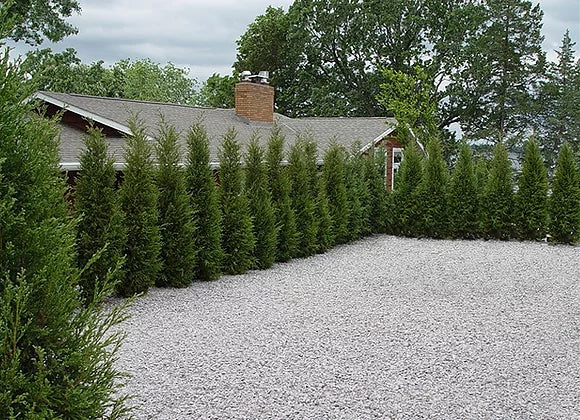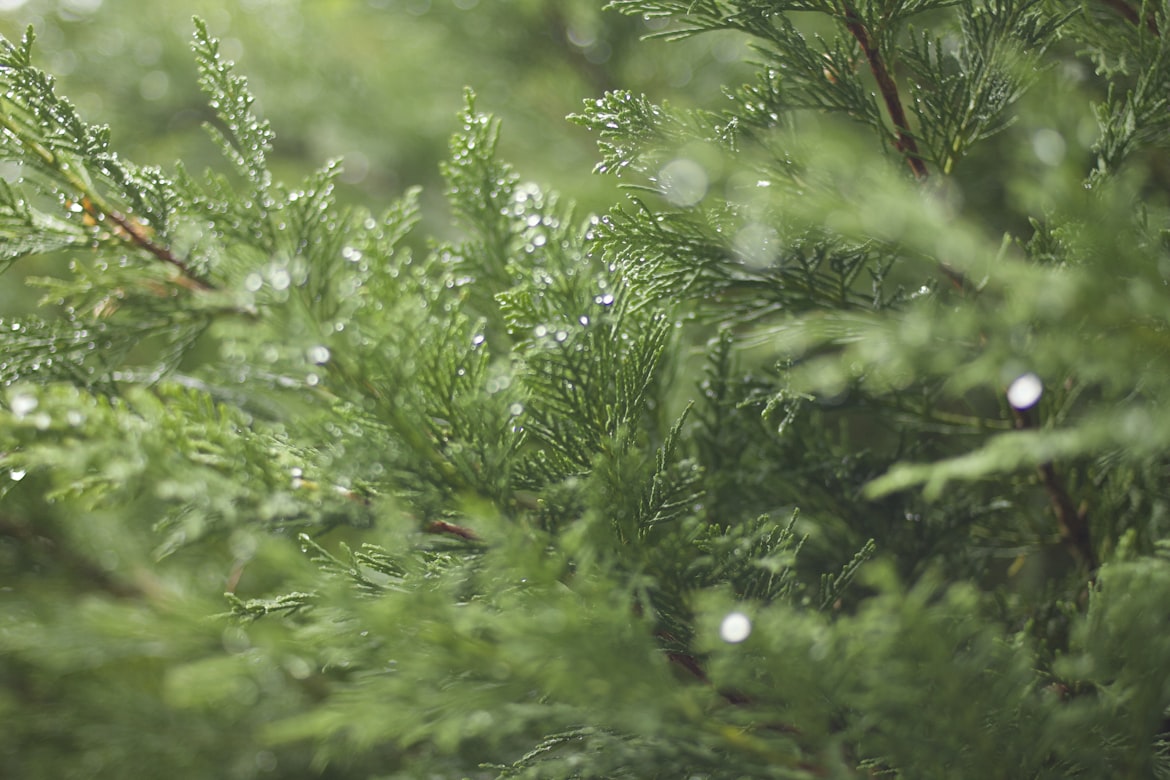
The History and Origins of Thuja Trees in Horticulture
Share
Thuja trees, with their graceful evergreen foliage and symbolic resonance, stand as living testaments to a history deeply intertwined with horticulture. Looking at Thuja's history, originally from eastern North America, these trees—also referred to as Arborvitae or white cedar—are planted as attractive trees in Europe.
At Thuja Gardens, you can buy Thuja trees online. We have been offering varieties of Thuja trees since 1999.
Native Roots in Eastern North America:
The narrative of Thuja commences in the pristine forests of Eastern North America, where native species such as Thuja occidentalis thrived. Known as Northern White Cedar or Eastern Arborvitae, these evergreens played integral roles in the ecosystems, revered for their resilience and versatility by Indigenous peoples.
Cultural Significance Among Indigenous Peoples:
The indigenous communities of Eastern North America held Thuja trees in high regard. Often referred to as the "Tree of Life," these evergreens were not just botanical entities but spiritual symbols. Indigenous peoples utilized Thuja wood for various purposes, including crafting canoes, constructing dwellings, and incorporating the wood's longevity symbolism into their rituals.
European Encounters and Horticultural Introduction:
With the arrival of European settlers, Thuja trees attracted the attention of botanists and horticulturists. The unique characteristics of Eastern Arborvitae, such as its aromatic foliage and straight-grained wood, prompted its introduction to European gardens during the 17th century. The tree's adaptability and aesthetic appeal contributed to its rapid integration into horticultural landscapes.

Botanical Exploration and Global Dissemination:
As botanical exploration flourished, Thuja species found their way into botanical collections worldwide. The fascination with these evergreens transcended geographical boundaries. Thuja's global dissemination became a testament to its adaptability in various climates, earning it a place in gardens and landscapes across the continents.
Cultivation and Hybridization:
The cultivation of Thuja extended beyond its native habitats, leading to the development of cultivars and hybrids. Horticulturists sought to enhance specific traits, resulting in the introduction of variations like Thuja plicata, Western Red Cedar, and a myriad of cultivars that added diversity to gardens.
Modern Landscape Dominance:
In contemporary landscapes, Thuja trees stand as ubiquitous symbols of greenery and resilience. Their adaptability, year-round foliage, and ease of cultivation have made them quintessential components of modern gardens, suburban landscapes, and urban green spaces. Thuja's journey from Eastern North American forests to global horticultural dominance speaks to its enduring popularity.

Conservation Amid Popularity:
As Thuja's popularity soared, conservation efforts emerged to protect its native habitats in Eastern North America. Recognizing the ecological importance of Eastern Arborvitae, initiatives were launched to ensure the preservation of natural ecosystems where these evergreens play crucial roles.
Essential Care Tips for Thriving Thuja Trees Anywhere
Thuja trees, also known as arborvitae, are resilient and adaptable evergreens. Proper care ensures their health and longevity. Consider the following key factors:
1. Sunlight Exposure:
Optimal growth for Thuja trees requires full to partial sunlight. Ensure they receive a minimum of 6 hours of direct sunlight daily to promote lush foliage and overall well-being.
2. Soil Conditions:
Well-draining soil is essential. Aim for a slightly acidic to slightly alkaline pH (6.0 to 8.0). Improve drainage in heavy soil by incorporating organic matter.
3. Watering Routine:
Keep the soil consistently moist but not waterlogged. Deep, infrequent watering is recommended, allowing the soil to dry slightly between watering sessions. Newly planted trees may need more attention.
4. Fertilization Practices:
Apply a balanced, slow-release fertilizer in early spring for essential nutrients. Avoid over-fertilizing, as Thuja trees can be sensitive. Yearly fertilization during the growing season is generally sufficient.
5. Pruning Guidelines:
Regular pruning is beneficial for maintaining shape, removing dead/diseased branches, and enhancing air circulation. Conduct pruning during the dormant season or early spring, avoiding heavy pruning in late fall.

7. Mulching Benefits:
Mulch around the base of Thuja trees for moisture retention, weed suppression, and soil temperature regulation. Maintain a 2-4 inch layer of organic mulch, ensuring it doesn't touch the trunk to prevent rot.
8. Climate Adaptability:
While Thuja trees adapt well to various climates, they flourish in temperate zones (USDA hardiness zones 3-7). Shield them from strong winds, especially in winter, to prevent desiccation.
9. Balanced Pruning for Shape and Density:
When pruning, aim for a balanced approach to maintain the tree's natural shape and density. Avoid excessive pruning, as this can lead to stress and affect overall growth.
10. Proper Watering During Dry Spells:
During extended dry periods, ensure consistent watering to prevent stress on Thuja trees. Deep watering, allowing moisture penetration to the root zone, is crucial for sustained health.
11. Proper Spacing:
Plant Thuja trees with adequate spacing to facilitate air circulation, fostering healthy growth and reducing the risk of diseases. Avoid overcrowding for optimal results.
12. Vigilance Against Pests and Diseases:
Regularly inspect for common pests like bagworms and spider mites. Implement integrated pest management strategies and promptly address any signs of diseases to prevent widespread damage.
13. Wind Protection for Young Trees:
Shield young or recently planted Thuja trees from harsh winds using temporary windbreaks. This practice promotes healthy establishment during their initial growth phases.
14. Winter Protection with Anti-Desiccant Spray:
Consider applying an anti-desiccant spray to Thuja foliage in late fall or early winter. This protective coating reduces moisture loss through the leaves, which is crucial during dry winter spells.
Get Thuja Trees For Sale Online From Thuja Gardens
At Thuja Gardens, we offer Thuja varieties on sale. You can buy Thuja Green Giant, American Pillar Arborvitae, and The Gentle Giant for sale.
You can either pick them up from our nursery or have yours FedEx-delivered for free. So, find your zone and get your Thuja tree now.
